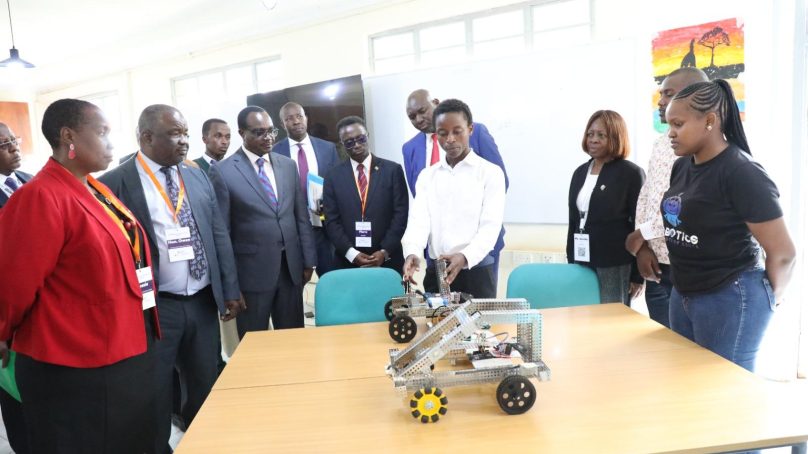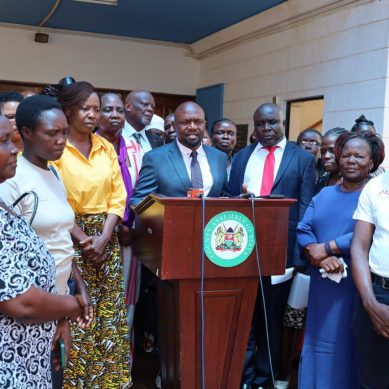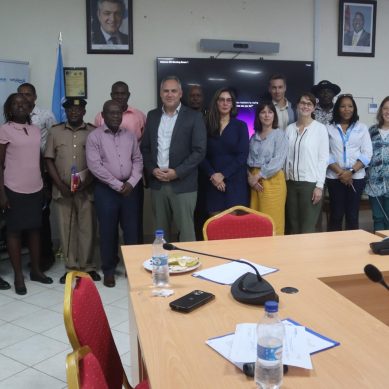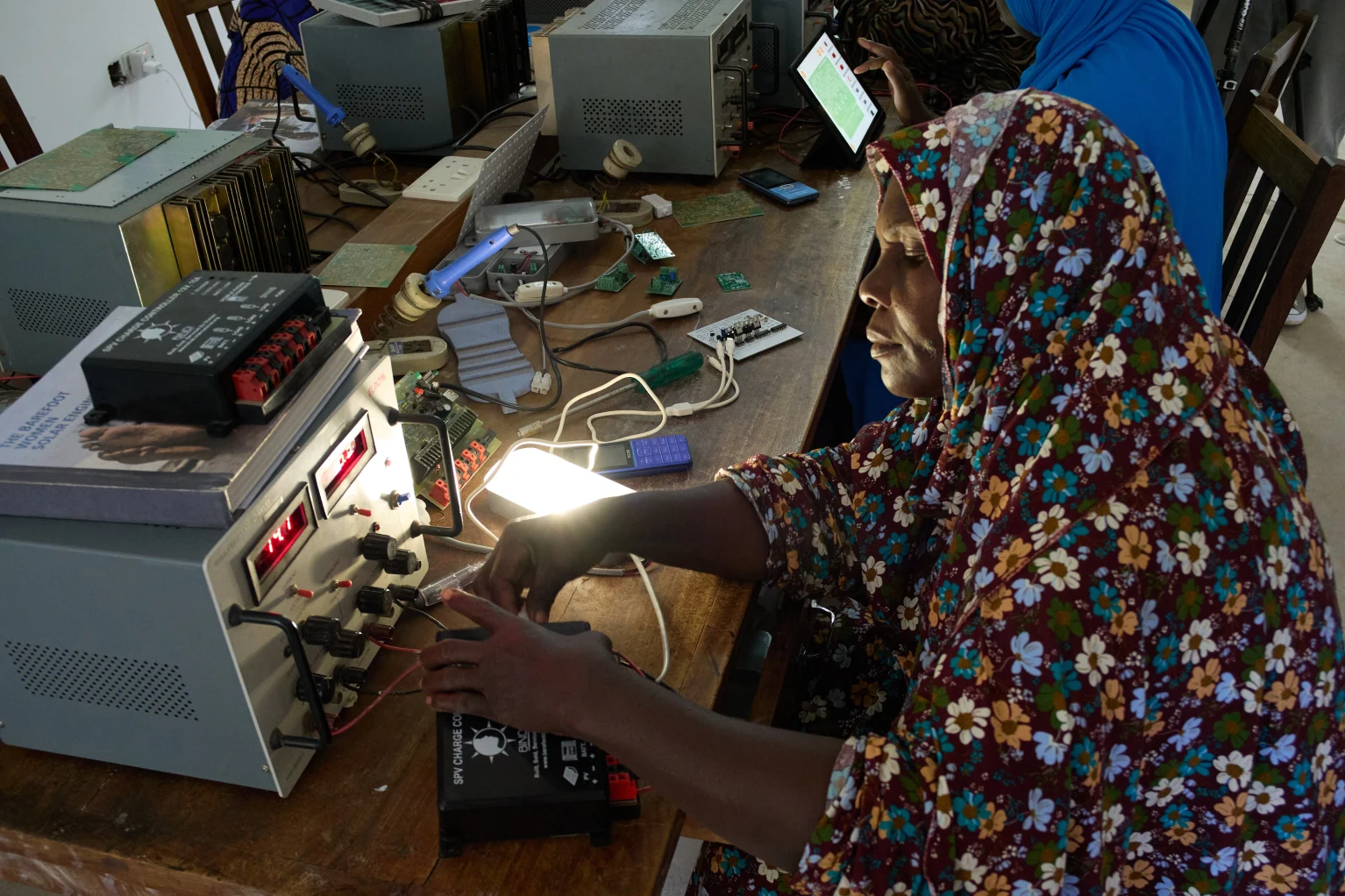
Education Cabinet Secretary Julius Ogamba has called for renewed commitment among African nations to investment in science, technology, engineering, and mathematics (STEM) as a critical driver of industrialisation and youth empowerment across the continent.
Speaking while officiating the STEMTastic Adventures! Africa 2025 Symposium hosted by the Centre for Mathematics, Science and Technology Education in Africa (CEMASTEA) in Karen, Nairobi, and Ogamba urged states to rethink, collaborate and act decisively in reshaping Africa’s educational landscape.
The symposium attracted government ministers, education stakeholders and delegates from over 30 African countries.
“Sixty per cent of Africa’s population is under the age of 30. By 2050, one in every four youth globally will be from Africa. STEM education is not just a necessity, but our lifeline to industrial competitiveness and sustainable development,” Ogamba said.
The cabinet secretary emphasised that with such a youthful population, Africa needs to equip its young people with relevant skills to excel in the Fourth Industrial Revolution. He underlined the need to invest in STEM was not optional but a strategic imperative.
For instance, the cabinet secretary noted Kenya’s commitment to STEM through the Competency-Based Education (CBE), which offers three senior school pathways: STEM, arts and sports, and social sciences.
“Kenya is home to STEM,” he said, and explained that CBE enables learners to align education with their passions and aspirations.
To boost STEM delivery, Ogamba announced that the government is constructing 1,600 new laboratories countrywide and also recruiting newly graduated STEM teachers.
On strategies to strengthen STEM education in schools, Ogamba revealed that efforts were underway to rationalise the deployment of existing teaching staff to ensure equitable distribution across institutions.
The cabinet secretary said the Ministry of Education is working closely with the National Treasury to ensure full release of capitation funds to both primary and secondary schools, which is crucial in meeting STEM learning targets.
Addressing broader education concerns, Ogamba reaffirmed the government’s zero-tolerance policy on abuse in schools, assuring the public that investigations are underway into allegations of misconduct involving a teacher at Alliance Girls High School.
“We are handling the matter both administratively and through the established legal channels. Any teacher found culpable of molestation or inappropriate conduct will face the full force of the law,” he said.
The cabinet secretary further urged school administrators and education officers to create open channels of communication with students, particularly during these exam periods, to reduce stress and tension. “Mental wellness and discipline are key,” he added.
The cabinet secretary, who toured the boot-camps, was amazed by some young innovators who burnt the midnight oil to develop creative solutions. He lauded CEMASTEA for providing a valuable platform that empowers young people to showcase innovations by addressing real-world challenges such as environmental pollution, climate change and industrial inefficiencies.
The cabinet secretary commended CEMASTEA CEO Jacinta Akatsa for her visionary leadership in organising the STEM symposiums and nurturing a culture of innovation among students. He further called on more learners to take advantage of such boot-camps to harness their creativity, develop problem-solving skills and contribute meaningfully to Africa’s transformation agenda.
During the function, one of the notable students, Anzel Cindy Hayo from St Anne’s Girls School, Nairobi, showcased a hybrid water hyacinth harvester powered by solar energy. Her invention, the ANZDA Hybrid Water Hyacinth Harvester, is designed to clean invasive water weeds like hyacinth from water bodies such as Lake Victoria.
“Our project uses solar energy to power a vessel that uproots and collects water hyacinth. The weed is then processed for use as fertiliser or fish feed,” Anzel explained.
She stressed the environmental and economic value of the project, which addresses the pressing issue of water hyacinth clogging local waterways.
“Water hyacinth contributes to global warming by producing methane during decomposition,” she said, adding, “We must act to protect ecosystems and local livelihoods. I come from the Lake Victoria Region, and I’ve seen first-hand how this weed disrupts lives.”
At the same time, two students from Oloolaiser High School in Ngong, Gamaliel Saitabao and Wyne Otieno, stole the show after developing automated smart waste bins. Their innovation project uses ultrasonic sensors to open lids automatically, alongside RFID (radio frequency identification) cards to restrict access once the bins are full, thus ensuring that only authorized waste collectors can access them.
The bins send real-time alerts via Global System for Mobile Communications (GSM) to facilitate timely waste collection, enhancing hygiene and efficiency in waste management. The duo highlighted the project’s affordability and student-led innovation, encouraging their peers to use technology in advancing the Sustainable Development Goals (SDGs), while urging them to simplify, “Identify the problem, have faith and solve the challenges we face every other day.”
- A Tell Media / KNA report / By Ian Chepkuto







